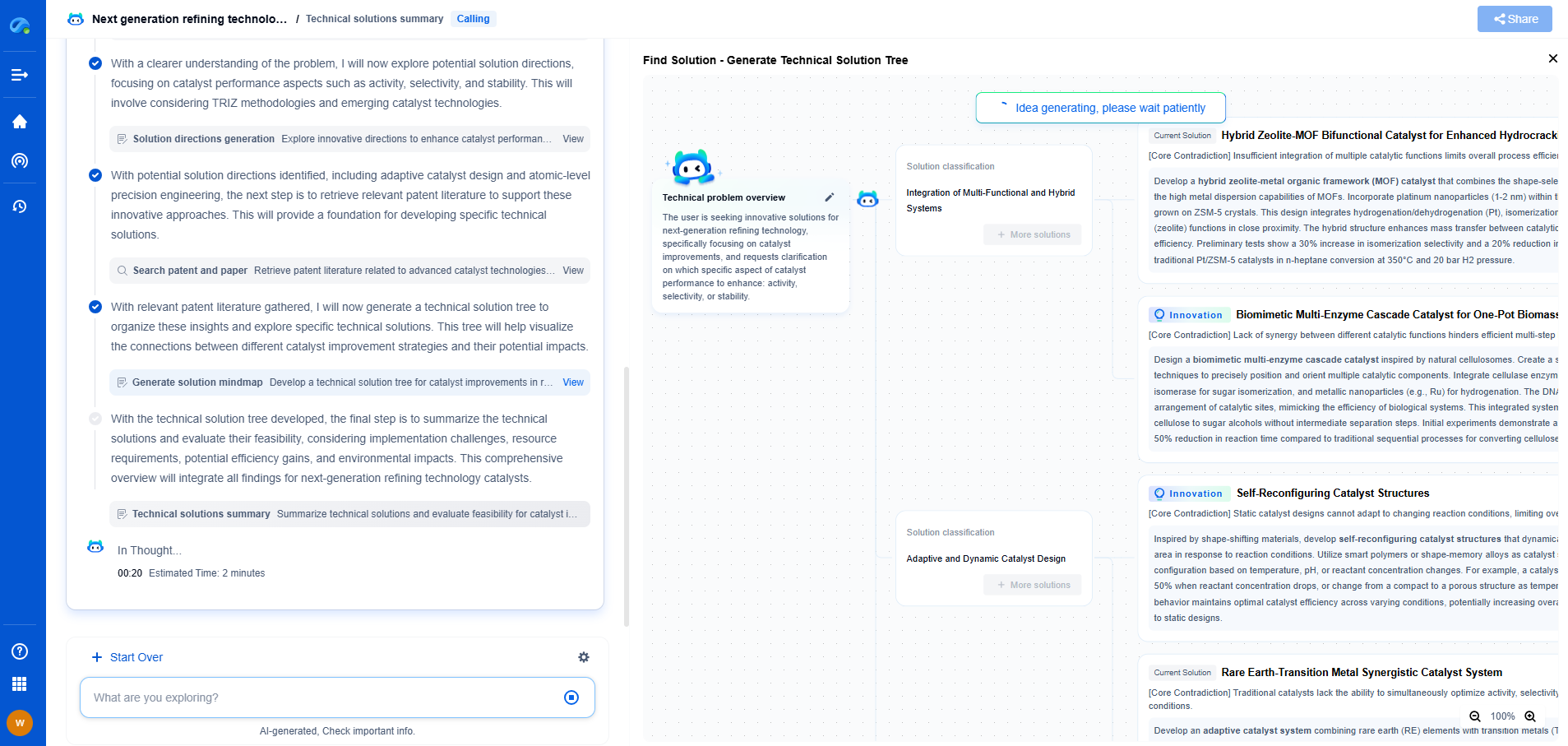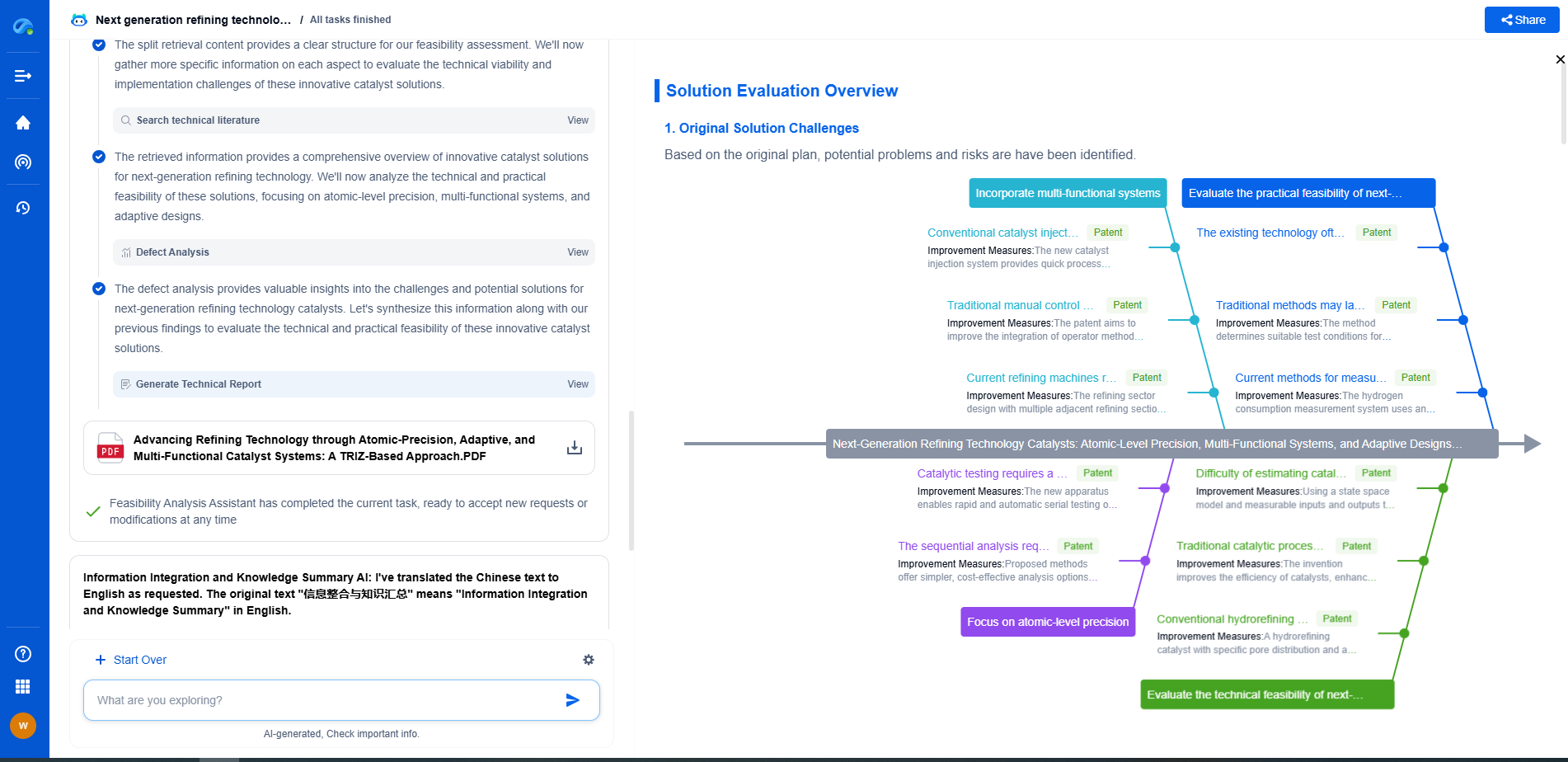Eco-Friendly Drilling: Can Underbalanced Methods Reduce Environmental Impact?
JUN 20, 2025 |
In recent years, the oil and gas industry has faced increasing pressure to adopt more environmentally friendly practices. Among the various techniques being explored, underbalanced drilling (UBD) has garnered considerable attention for its potential to mitigate some of the environmental impacts associated with traditional drilling methods. But what exactly is underbalanced drilling, and how can it contribute to eco-friendly drilling practices?
Underbalanced drilling refers to a method where the pressure of the drilling fluid in the wellbore is intentionally kept lower than the formation pressure. This is contrary to conventional drilling, where the wellbore pressure is higher to prevent wellbore instability and blowouts. By keeping the pressure low, UBD can offer several environmental and operational benefits that can lead to more sustainable drilling operations.
Reduced Fluid Use and Waste
One of the primary environmental advantages of underbalanced drilling is the significant reduction in drilling fluid use. In traditional overbalanced drilling, large volumes of drilling mud are required to maintain wellbore pressure, often leading to the generation of substantial amounts of waste. The mud can be contaminated with cuttings, hydrocarbons, and other potentially hazardous materials, which then require proper disposal to prevent environmental contamination.
In UBD, the reduced need for drilling fluids translates to lesser waste generation. This not only decreases the environmental footprint of drilling operations but also reduces the potential for spills and leakages that can harm surrounding ecosystems. Additionally, with less waste to manage, companies can achieve cost savings and improve operational efficiency.
Minimizing Formation Damage and Reservoir Impact
Another key benefit of underbalanced drilling is its ability to minimize formation damage. Traditional drilling methods can lead to the invasion of drilling fluids into the formation, potentially damaging the reservoir and reducing its productivity. This invasion can cause issues like clay swelling, pore plugging, and loss of permeability, which can adversely affect the extraction of oil and gas.
By maintaining a lower wellbore pressure, UBD minimizes the risk of fluid invasion, preserving the natural state of the formation. This not only helps in maximizing hydrocarbon recovery but also prevents the unnecessary depletion of resources, aligning with the principles of sustainable resource management.
Reduced Emissions and Lower Carbon Footprint
The oil and gas industry is a significant contributor to greenhouse gas emissions, with traditional drilling operations playing a substantial role in this. Underbalanced drilling can help in reducing emissions by decreasing the energy required for operations and lowering the carbon footprint. Since UBD maintains formation pressure and minimizes fluid loss, there is less need for additional equipment and energy to manage wellbore stability, reducing the overall emissions from the drilling process.
Furthermore, UBD can lead to faster drilling operations, resulting in a shorter duration of emissions-intensive activities. This not only helps companies meet regulatory requirements but also supports broader industry efforts to combat climate change.
Challenges and Considerations
While underbalanced drilling offers promising environmental benefits, it is not without its challenges. Implementing UBD requires specialized equipment, a skilled workforce, and careful planning to manage well control and prevent blowouts. The technique may not be suitable for all geological formations, and its success depends on a thorough understanding of the reservoir conditions.
Moreover, the initial costs of transitioning to underbalanced drilling can be high, posing a barrier for smaller operators. However, the long-term benefits, both environmentally and economically, often justify the investment, especially as the industry moves towards more sustainable practices.
Conclusion: A Step Towards Sustainable Drilling
Underbalanced drilling represents a significant step forward in reducing the environmental impact of oil and gas extraction. By minimizing fluid waste, protecting reservoir integrity, and reducing emissions, UBD aligns with the growing emphasis on eco-friendly practices in the industry.
As technology advances and the understanding of these methods improves, underbalanced drilling could become an integral part of a sustainable energy future. While challenges remain, the potential for UBD to contribute to more responsible and environmentally conscious drilling practices is undeniable. As the world continues to seek energy solutions that balance economic needs with environmental stewardship, underbalanced drilling stands out as a promising option worth exploring further.
Navigating the Complexities of Drilling Innovation? Let AI Do the Heavy Lifting
In an industry where subsurface conditions, materials science, and drilling dynamics evolve rapidly, staying ahead of technical innovation and protecting your intellectual property can be overwhelming.
Patsnap Eureka, our cutting-edge AI assistant, is built for R&D and IP professionals in high-tech industries like drilling technologies. Whether you're optimizing rotary steerable systems, evaluating high-temperature materials, or exploring next-gen automation in directional drilling, Eureka enables real-time analysis of the latest patents, technology landscapes, and competitive movements—all from one intelligent, intuitive platform.
Ready to accelerate your development cycle and make strategic decisions with confidence? Explore Patsnap Eureka today—where smart drilling starts with smarter insights.
- R&D
- Intellectual Property
- Life Sciences
- Materials
- Tech Scout
- Unparalleled Data Quality
- Higher Quality Content
- 60% Fewer Hallucinations
Browse by: Latest US Patents, China's latest patents, Technical Efficacy Thesaurus, Application Domain, Technology Topic, Popular Technical Reports.
© 2025 PatSnap. All rights reserved.Legal|Privacy policy|Modern Slavery Act Transparency Statement|Sitemap|About US| Contact US: help@patsnap.com

